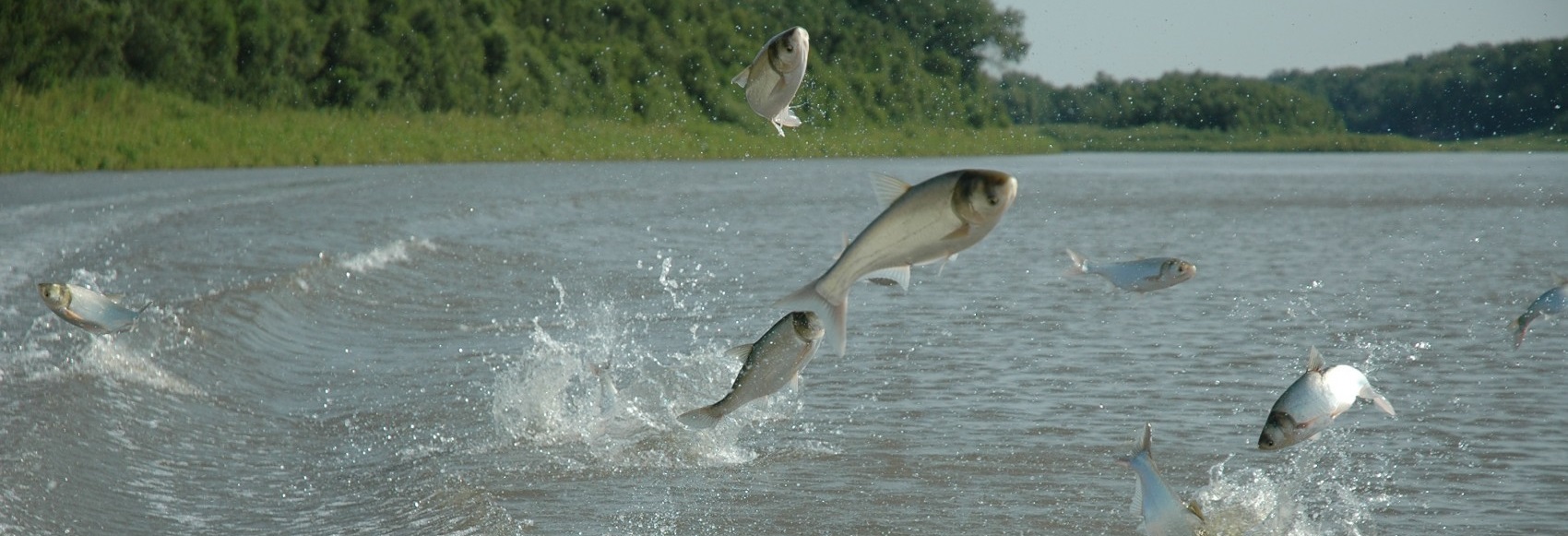Great Lakes Panel on Aquatic Nuisance Species
About the Great Lakes Panel on Aquatic Nuisance Species
Aquatic invasive species (AIS) are recognized as one of the most significant threats to the ecological and economic health of the Great Lakes region. More than 180 non-native species are established the lakes, many of which are invasive and causing harm. The Great Lakes Panel on Aquatic Nuisance Species coordinates education, research, management and policy efforts to prevent new AIS from entering the basin and to control and mitigate those AIS populations already established. The Great Lakes Panel is one of six regional panels that report to the federal Aquatic Nuisance Species Task Force, which coordinates AIS efforts on a federal level. The Great Lakes Commission serves as administrator and provides staff support to the Great Lakes Panel.
The Great Lakes Panel on Aquatic Nuisance Species is legislatively mandated to: identify AIS priorities for the Great Lakes region; assist and make recommendations to the federal Aquatic Nuisance Species Task Force; coordinate AIS program activities in the region; and advise public and private interests on prevention and control efforts.

Numerous federal agencies and state, local, and non-governmental entities are working on various aspects of AIS management, including information and education, research and monitoring, and prevention and control, among others. The need for multijurisdictional coordination and collaboration is essential to effectively implement AIS prevention and control strategies across jurisdictional boundaries. The Great Lakes Panel on Aquatic Nuisance Species was first convened in late 1991 by the Great Lakes Commission in response to section 1203 of the Nonindigenous Aquatic Nuisance Prevention and Control Act of 1990, referred to as “NANPCA.” In establishing the Great Lakes Panel, Congress recognized that providing sound advice to the Aquatic Nuisance Species Task Force from experts in a highly-impacted region could make a substantial contribution to the collective management effort at both a regional and national level. Effective prevention and control efforts in the Great Lakes continue to be the first line of defense in slowing or preventing the spread of AIS to other regions of the country.
The Great Lakes Panel membership is drawn from U.S. and Canadian federal agencies, the eight Great Lakes states and the provinces of Ontario and Québec, regional agencies, user groups, local communities, tribal authorities, commercial interests, and the university/research community. The Great Lakes Panel meets twice a year in locations around the region and focuses its efforts in three broad areas – Information/Education, Research Coordination, and Policy Coordination. Each focus area is supported through a committee comprised of Great Lakes Panel members with relevant interests and expertise. At times, the Great Lakes Panel also convenes ad hoc committees to address specific issues that emerge or assume tasks not covered by the standing committees. The current ad-hoc committee is focused on preventing the organisms in trade pathway.
For more information on the history of the Great Lakes Panel and its operations, please download the Great Lakes Panel Guidance for Operations (PDF).
Project Partners
U.S. Fish and Wildlife Service
Funding
Funding is provided by the U.S. Fish and Wildlife Service.
For More Information
Samantha Tank
Program Manager
[email protected]
Sign up for our e-newsletter
Get the latest Great Lakes Commission news and events in your inbox!
Sign up for our e-newsletter
Get the latest Great Lakes Commission news and events in your inbox!
